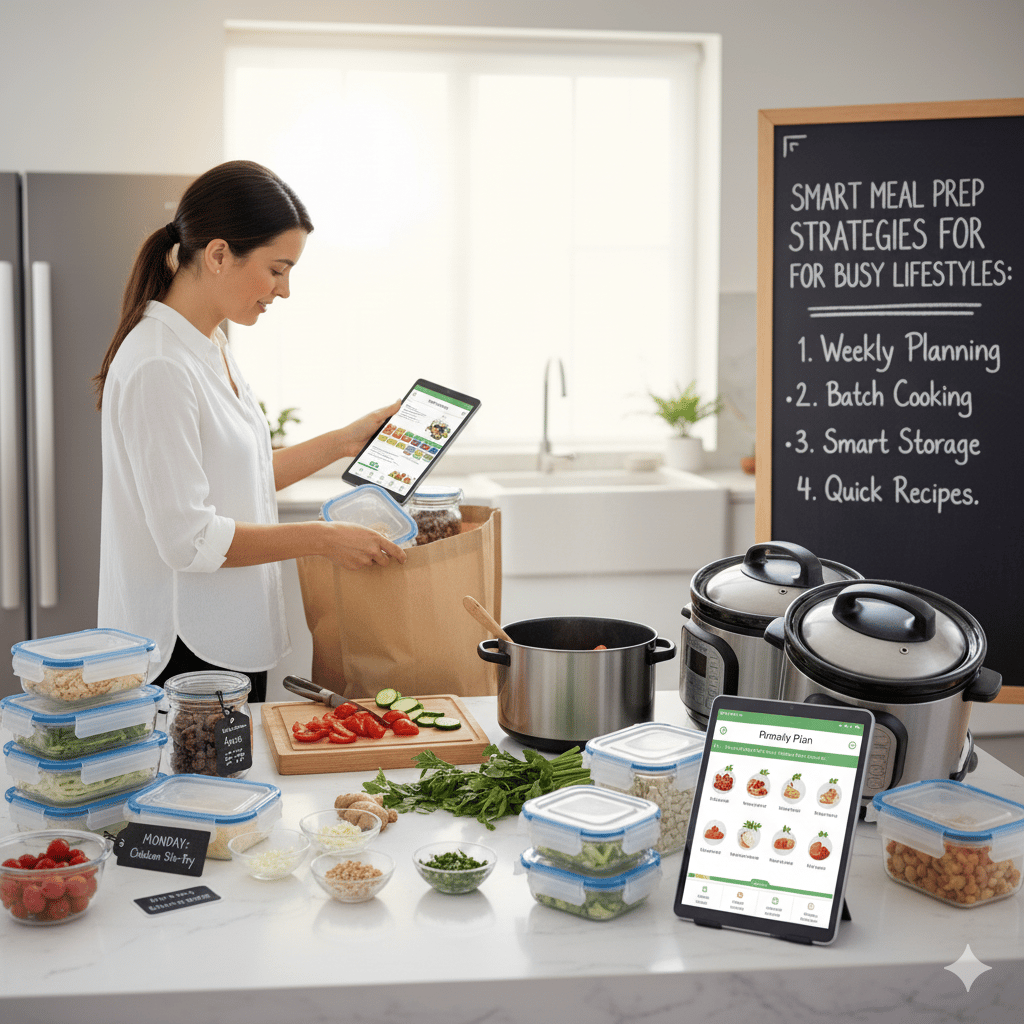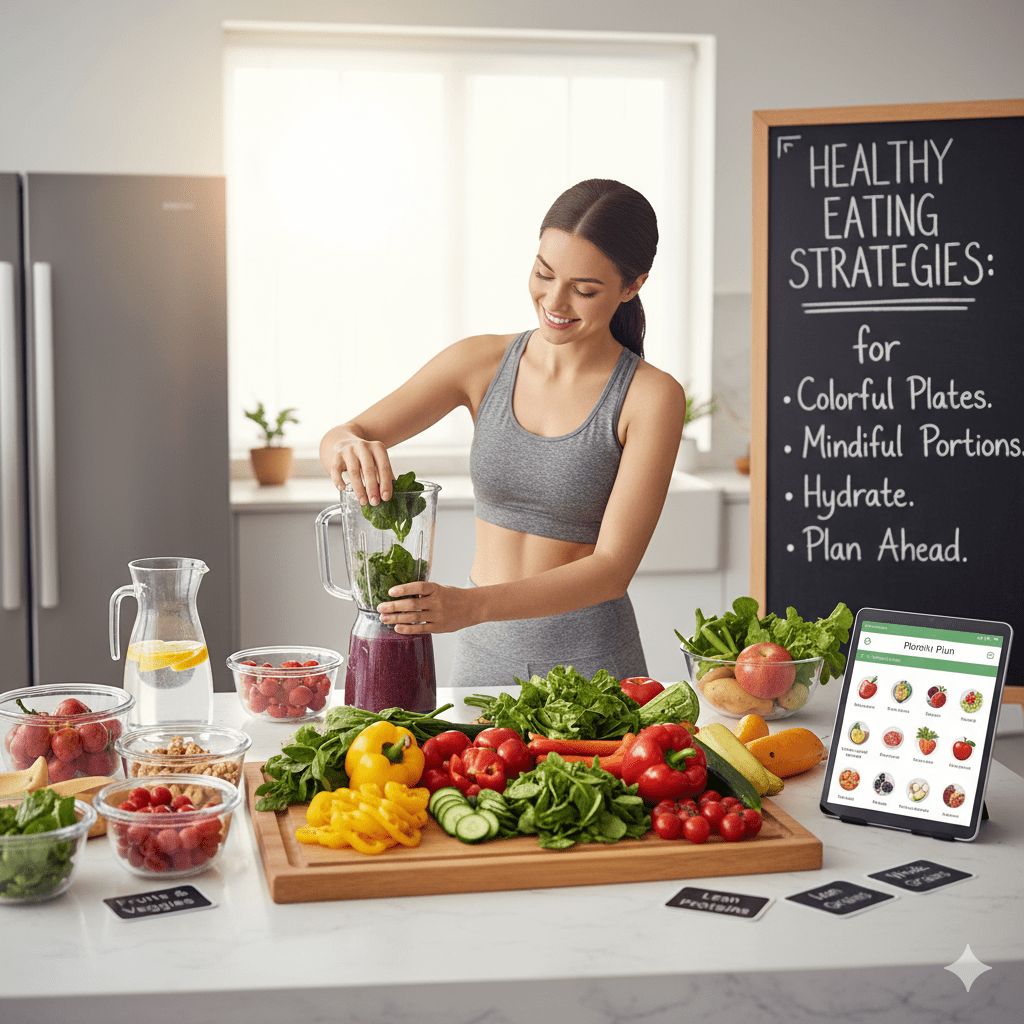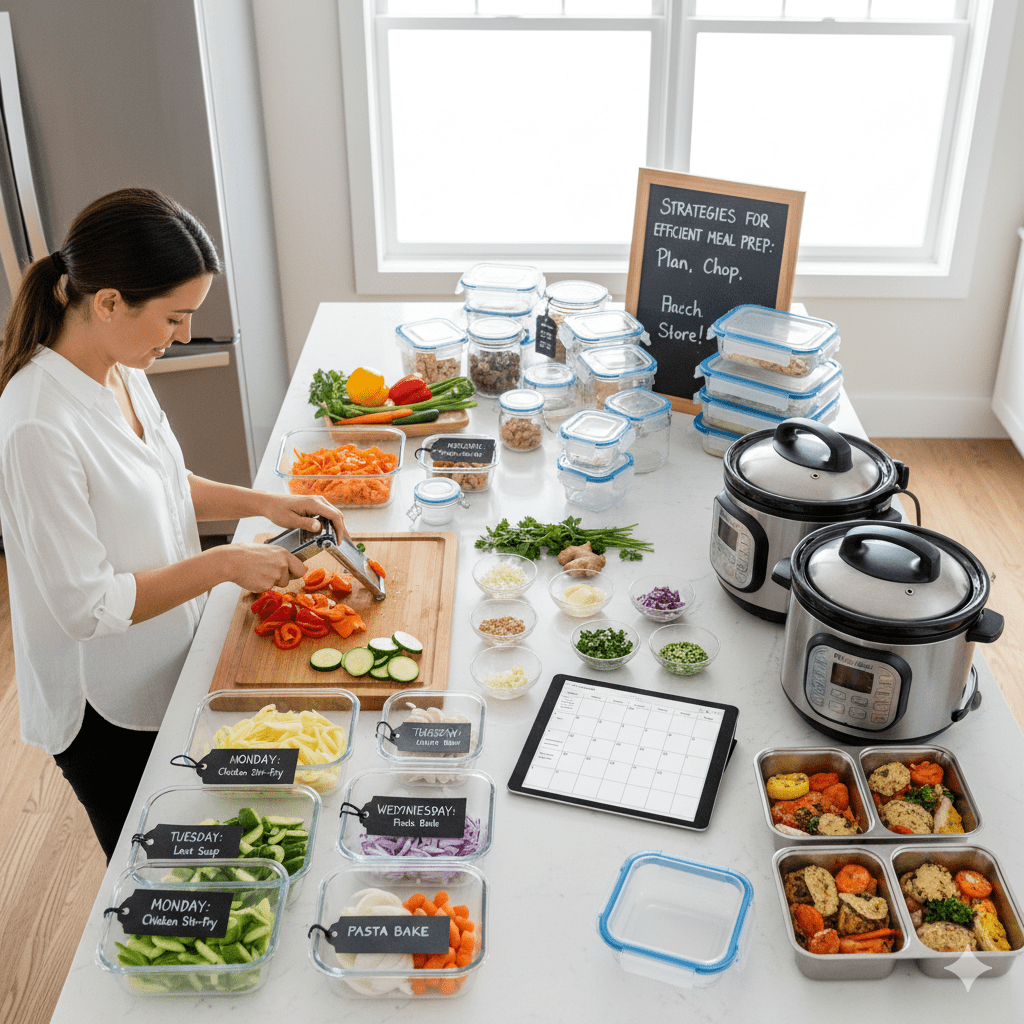- Ark's Newsletter
- Posts
- Meal Preparation Strategies for Modern Lifestyles
Meal Preparation Strategies for Modern Lifestyles
Executive Summary
A comprehensive analysis of the provided sources reveals a central tension in modern life: the desire for healthy, home-cooked meals is frequently undermined by the pervasive challenge of time scarcity. Busy schedules, driven by demanding work, commutes, and family obligations, create significant barriers to consistent healthy eating, leading to a greater reliance on fast food and convenience items with potential negative health consequences. This is particularly acute in dual-income and single-parent households.
Meal preparation, in its various forms, emerges as the primary strategic solution to this challenge. However, effective meal prep is not a monolithic concept but a flexible spectrum of methodologies. These range from cooking and portioning full meals for the week to prepping individual components for quick assembly, to stocking a freezer with “emergency” homemade meals that require no advance planning. The success of these strategies is significantly enhanced by leveraging specific kitchen technologies—such as slow cookers, air fryers, and high-powered blenders—and foundational techniques like batch cooking, creating homemade sauces, and proper storage of prepped ingredients. While the process itself can be demanding, especially for parents of young children, the sources collectively demonstrate that a strategic investment of time in meal preparation provides a substantial return in convenience, health, and stress reduction throughout the week.

The Core Challenge: Time Scarcity and Its Impact on Diet
The fast-paced nature of modern life has fundamentally altered family meal practices. A research paper on family structure highlights that the rise of dual-income and single-parent families has severely constrained the time available for meal preparation. This dynamic, compounded by long work hours, commutes, and children’s extracurricular activities, pushes families toward fast food and convenience options.
Impact by Family Structure:
Dual-Income Nuclear Families: With both parents often working long or irregular hours, the time for meal planning and cooking is sharply reduced, making fast food a convenient choice.
Single-Parent Households: These families face even greater time and resource limitations, as one adult must balance income-earning with all caregiving duties, leading to a higher reliance on fast food, which can also be perceived as a cheaper option.
Extended Families: While the presence of additional adults like grandparents may provide more support for home cooking, these households are still susceptible to the pressures of modern busy schedules.
The Reality of Exhaustion: This academic framework is supported by personal accounts. One individual describes the need for last-minute meal options for evenings when they arrive home “from work exhausted,” a state where even having groceries on hand isn’t enough to prevent ordering takeout.
The Family Meal Prep Experience: For parents of young children, the process of meal preparation can be a “whole day affair” characterized by “chaos,” tantrums, and constant interruptions. This reality underscores that dedicating time to cooking is not a simple task but a significant logistical and emotional undertaking that often competes with the desire to spend limited time off with family.
Health Implications: The shift away from home-cooked meals is not without consequence. The research study explicitly links rising fast food consumption to serious health risks, including obesity, cardiovascular disease, and type 2 diabetes.

A Spectrum of Meal Prep Methodologies
The sources present a range of meal preparation strategies, demonstrating that the optimal approach depends on individual lifestyle, preferences, and tolerance for repetition. The key is moving away from an all-or-nothing mindset and adopting a flexible methodology.
1. Full Meal Prep (Make-Ahead Meals)
This traditional method involves preparing complete meals and portioning them into individual containers for the week. It is particularly beneficial for busy schedules, providing quick, healthy grab-and-go options for lunches or simple reheatable dinners. While highly efficient, this approach can lead to “meal fatigue” for those who dislike eating the same dish multiple days in a row.
2. Component Prep (Ingredient Batch Cooking)
A highly flexible alternative, component prep focuses on preparing individual ingredients in bulk rather than entire meals. This is the preferred method for those who value variety. By prepping foundational elements, a wide array of different meals can be assembled quickly throughout the week.
Core Components to Prep:
Proteins: Cooked and shredded chicken, cooked and drained ground beef.
Grains: Large batches of quinoa, brown rice, or pasta.
Vegetables: Pre-chopped raw vegetables (onions, peppers) or roasted vegetables.
Sauces & Dressings: A jar of homemade dressing or sauce.
This “assembly-style” approach allows for diverse meals from a limited set of prepped items. For example, pre-cooked chicken can be used in tacos, salads, wraps, or grain bowls.
3. Low-Effort and No-Cook Prep
For extremely busy individuals, low-effort and no-cook options provide healthy meals with minimal active time investment.
Slow Cooker Meals: “Set it and forget it” recipes allow users to throw ingredients into a Crock-Pot in the morning and return hours later to a fully cooked meal. The Betty Rocker source provides ten such recipes, including whole chicken, chili, and lasagna, that are gluten and dairy-free.
Overnight Oats: This no-cook breakfast requires only a few minutes of prep. By soaking rolled oats, milk, yogurt, and chia seeds overnight, the starches break down, making the oats easier to digest. They can be stored for 3-4 days in the fridge and are endlessly customizable with fruits, nuts, and spices.
No-Cook Assembly: Strategies like layering salads in a mason jar, preparing wraps and sandwiches in advance, or creating charcuterie-style plates with deli meats, cheese, and fruit require zero cooking time.

The Strategic Role of the Freezer
Freezing is a critical tool that transforms meal prep from a weekly chore into a long-term resource, providing both convenience and a crucial defense against meal monotony.
Freezer Meals for “Emergency” Dinners
A primary challenge is the lack of energy for cooking on unexpectedly busy or exhausting nights. The solution is a stash of freezer meals that can be reheated directly from frozen without needing to be thawed in advance.
Key Principles:
Thawing is primarily to save reheating time, not a safety necessity for most pre-cooked foods.
Using a microwave’s “defrost” or “reheat” function, or an air fryer, is effective for reheating from frozen.
Packaging meals in thinner, wider containers rather than deep, narrow ones speeds up reheating.
Recommended Freezer Meals:
Soups, stews, chilis, and curries
Individual portions of lasagna or baked ziti
Burritos and taquitos
Stuffed bell peppers
Empanadas and mini pot pies
Meatballs
Using Freezing to Increase Variety
For those who dislike eating the same meal repeatedly, freezing is the solution. Instead of prepping for one week, one can make a large batch of a recipe, eat a portion, and freeze the remaining servings. Over several weeks, this builds a “library” of different homemade meals in the freezer, allowing for daily variety without daily cooking. Tools like Souper Cubes—silicone molds for freezing perfect one- or two-cup portions—are highly recommended for this purpose.
Foundational Techniques and Best Practices
Across all methodologies, several core practices and tools are essential for efficient and successful meal preparation.
Ingredient Management and Preparation
Enhancing Flavor and Nutrition
To prevent prepped meals from becoming bland, a focus on flavor is crucial. Homemade sauces are cited as a “total game changer” that can elevate simple ingredients. They are superior to store-bought versions in taste, nutrition (less sugar and strange ingredients), and cost.
Meal Prep-Friendly Sauces:
Chimichurri
Dairy-Free Pesto
Homemade BBQ Sauce
Basil Aioli
Creamy Tahini Sauce
Almond Butter or Peanut Sauce
Cilantro Lime Hummus
Leveraging Kitchen Technology
The right appliances can make meal prep significantly faster and more efficient.